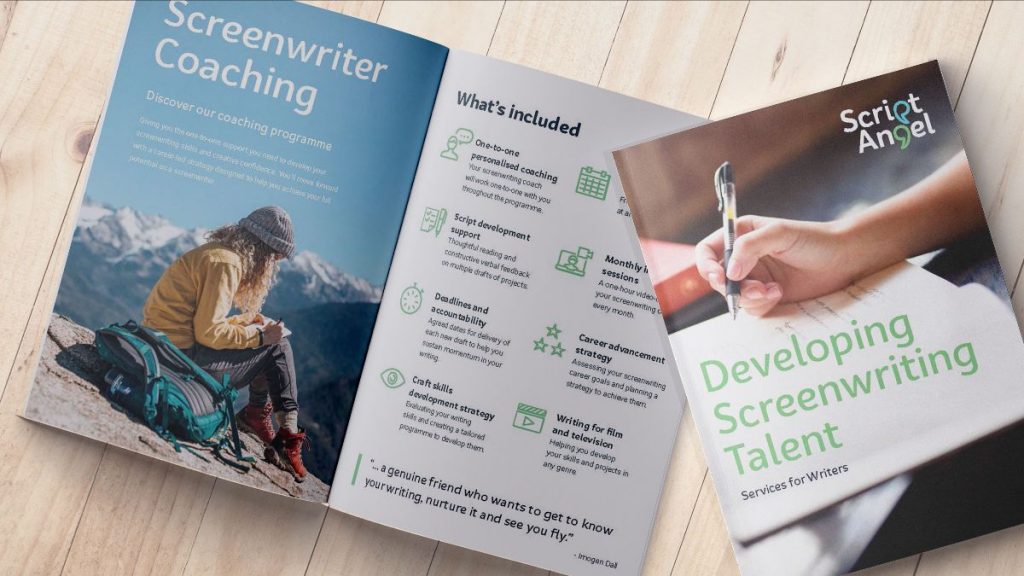An outline is a screenwriting document you’ve probably heard mentioned but perhaps without really being sure what exactly it is or how best to use it in your own screenwriting process. Having helped hundreds of screenwriters develop their film and television projects from idea to polished (often to shooting) script, here’s my lowdown on how outlining can work for you.
![]()
What is an outline?
The definition of an outline is “a general description or plan showing the essential features of something but not the detail.” It’s helpful to think of a story outline as a map with signposts to help guide you to your end destination when writing the screenplay. How much detail to include in your outline is up to you, and might vary depending upon the project you’re working on. So while one writer’s outline might identify start (inciting incident), mid-point and end (pay-off), with only a couple of other story beats sketched in, another writer’s outline might list every single one of their hundred-plus scenes in story order. Beat-sheets and scene-by-scenes are terms that are often used to refer to these more detailed types of outline.
Who is it for?
A story outline is a script development tool for you and you alone. While a treatment is a polished, compelling prose version of your whole story and something you might show to a producer, the outline is intended for your eyes only. If you’re working with a trusted script editor or screenwriting coach it’s something you’ll probably want to show them as they help you develop your story idea but it’s not intended for an outside audience.
How to create an outline
Once you have a sense of the story direction and perhaps a few ideas for scenes, it’s time to start outlining. Note down all the things you already know about your story (any scenes, sequences, major turning points or incidents) and start to order them. Post-it notes or index cards can be a really useful way to capture what you have and start structuring them into a story shape. Getting what you already know written down and into some kind of order will show you where the gaps are and allow you to start creating new ideas to fill them.
This is also a good time to make sure you are starting to clarify the answers to basic questions about your story; whose story is it, what is their story, what do their want, what do they need, what’s at stake.
Does outlining kill the magic of discovery?
I’ve heard writers say that they want to discover their story as they write the script and they fear that outlining will kill that magical feeling of a story revealing itself. But outlines don’t have to be so rigid that they straight-jacket your creativity. If this is a fear for you, try keeping your outline sketchy, allowing yourself to still find exciting off-road adventures and scenic routes during the writing process.
Having some kind of map allows you, when writing, to assess any new ideas. Are they a scenic detour that adds richness and surprise and still gets you to where you need the story to end, or is it a dead end?
How to use outlining later in the process
If outlining before you go to script still fills you with dread then feel free to dive into the first draft and write your way into the story. Even here, outlining can be a really useful tool after you’ve written your wild and free first draft of the script. It gives you a tool to assess the story you’ve created in the first draft and ask; does the central story track, does every scene move the story on, are you giving your characters a hard enough time?
Creating a script development process that works for you
As a professional screenwriter it will be common practice to only write the script once someone is paying (commissioning) you to do so. To get that commission you’re going to need to have a clear sense of what the story is you want a producer to pay you to deliver. At this point in your screenwriting career outlining (in order to produce a treatment) will become an essential tool.
Even if you’re writing on spec right now, outlining is by far the most efficient way to discover and craft your story. But how much detail to put in before you go to script is entirely up to you. Experiment and discover a process that works for you. And if on your next project that process isn’t working so well, try new ways to develop your ideas and remember, outlining is just another tool at your disposal to help you turn your idea into a compelling script.
Find out how screenwriter coaching can help you develop your screenwriting process.




